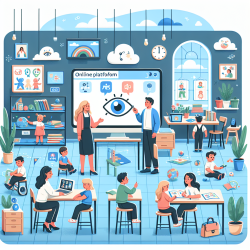Introduction
In the realm of speech-language pathology, understanding the neurological underpinnings of language acquisition can significantly enhance therapeutic approaches. A recent study titled "Group-level cortical functional connectivity patterns using fNIRS: assessing the effect of bilingualism in young infants" offers valuable insights into how bilingual environments might shape the infant brain's functional organization. This blog explores how practitioners can leverage these findings to improve outcomes for children.
Understanding the Study
The study utilized functional near-infrared spectroscopy (fNIRS) to investigate resting-state functional connectivity (RSFC) in 4-month-old infants. By comparing monolingual and bilingual infants, the research aimed to discern whether early bilingual exposure influences the brain's intrinsic connectivity patterns.
Key findings revealed no significant differences in RSFC between monolingual and bilingual infants at this age. However, the study suggests that adaptations might emerge later in development or during explicit linguistic tasks. This highlights the complexity of early bilingual exposure and its potential long-term impacts on cognitive and linguistic development.
Implications for Practitioners
For speech-language pathologists, these findings underscore the importance of considering environmental factors in early intervention strategies. Here are some practical applications:
- Early Assessment: Incorporate assessments that evaluate both linguistic and cognitive development in infants exposed to bilingual environments. This can help identify potential areas for intervention early on.
- Individualized Therapy: Design therapy sessions that account for the unique linguistic experiences of bilingual infants. This may involve incorporating elements from both languages to support cognitive and linguistic growth.
- Parental Guidance: Educate parents on the potential cognitive benefits of bilingualism and encourage a rich linguistic environment at home.
Encouraging Further Research
While the study provides a foundational understanding, further research is needed to explore the longitudinal effects of bilingual exposure on brain connectivity. Practitioners are encouraged to engage with ongoing research and consider participating in studies that aim to expand our knowledge in this area.
Conclusion
The study on bilingualism and infant brain connectivity offers a glimpse into how early linguistic environments might influence cognitive development. By integrating these insights into practice, speech-language pathologists can better support the diverse needs of children in bilingual settings.
To read the original research paper, please follow this link: Group-level cortical functional connectivity patterns using fNIRS: assessing the effect of bilingualism in young infants.










